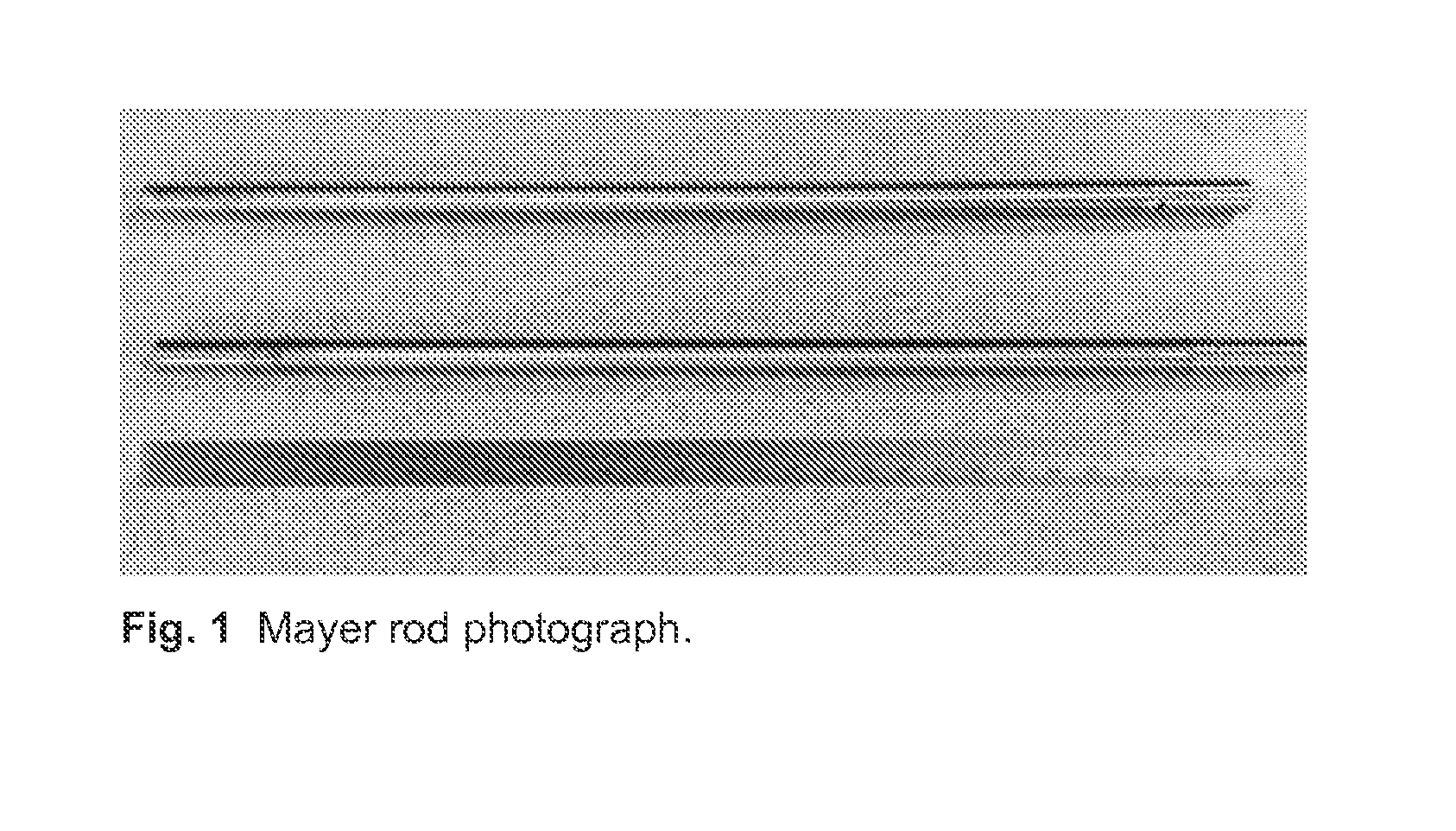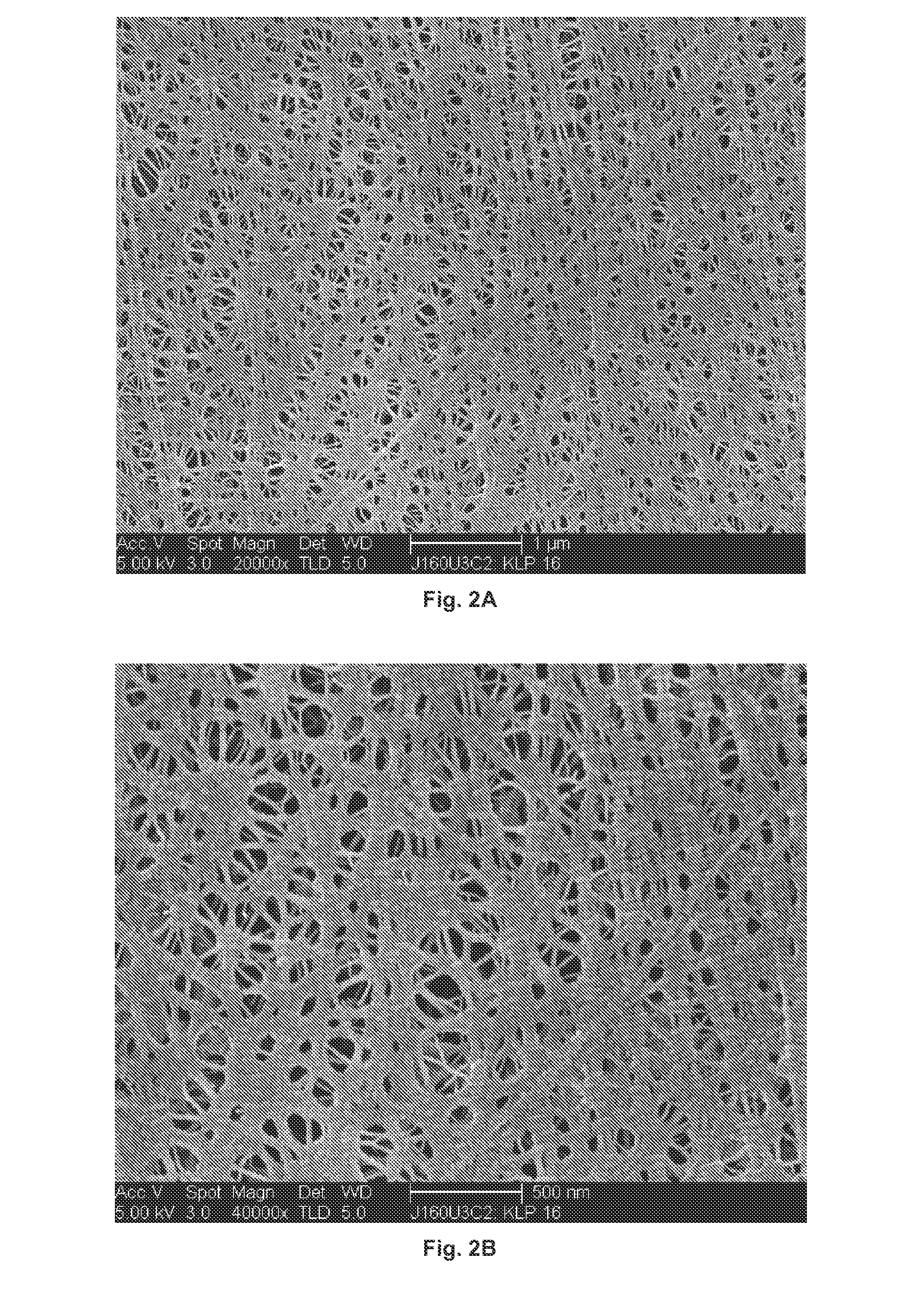Freestanding, dimensionally stable microporous webs
a microporous web, dimensionally stable technology, applied in the direction of cell components, cell component details, electrochemical generators, etc., can solve the problems of cracks or fractures that may appear at elevated temperature, and achieve the effects of preventing internal short circuits, improving dimensional stability, and maintaining shutdown properties
- Summary
- Abstract
- Description
- Claims
- Application Information
AI Technical Summary
Benefits of technology
Problems solved by technology
Method used
Image
Examples
example 1
[0042]A 16 μm thick, microporous ultrahigh molecular weight polyethylene-containing separator, Entek® KLP (Entek Membranes LLC, Oregon) (see FIGS. 2A and 2B) was used as a polyolefin membrane for coating. The 16 μm Entek® KLP membrane, before coating, is referred to herein as the control. The membrane was dipped through a 275 part isopropyl alcohol:1000 part water solution containing colloidal silica (LUDOX; Sigma-Aldrich Co. LLC) at the following concentrations: 5, 10, and 20 wt. %. Two #00 Mayer rods were used (one on each surface of the membrane) to remove the wet surface layer, and the membrane was then dried with a series of air knives and transported through a vertical oven set at 120° C.
[0043]The samples were examined by scanning electron microscopy and energy dispersive x-ray analysis to show that colloidal silica particles penetrated the membrane surface and were present in the bulk structure, as shown with three different magnifications in the SEMs arranged in the bottom r...
example 2
[0044]The thermal shrinkage values of the colloidal-modified separators in Example 1 were compared with the 16 μm Entek® KLP control. Three 100 mm×100 mm samples were cut from each separator type. The sample groups were held together with a small binder clip fixed in a corner. The samples were then suspended in an oven at 200° C. for 30 minutes. After closure of the oven, it was evacuated and then backfilled with argon for this test. Upon removal, the samples were cooled to room temperature and then measured to determine their shrinkage in the machine direction (MD) and the transverse direction (TD). The results in Table 1 show that there was a substantial reduction in transverse direction shrinkage as the separators were exposed to higher concentrations of colloidal silica.
TABLE 1200° C. shrinkage results200° C. shrinkageSampleMD %TD %16 μm Entek KLP control76.769.25% Ludox71.158.710% Ludox68.057.820% Ludox65.649.5
[0045]Examples 3-17 relate to inorganic surface layer coating formul...
example 3
[0046]A 16 μm thick, microporous ultrahigh molecular weight polyethylene-containing separator, Entek® KLP (Entek Membranes LLC, Oregon) was coated with an aqueous-based dispersion that contained the following:
25 gPolyvinyl alcohol (87-89% hydrolyzed; MW = 13-23K;Aldrich)610 gDistilled water275 gIsopropanol 59 gLUDOX HS-4G (40 wt. % colloidal silica; Sigma-Aldrich Co.LLC)1484 g CAB-O-SPERSE 1030 K (30 wt. % fumed silica; CabotCorporation).
[0047]The coating dispersion contained 20% solids with a 90:5:5 1030K:LUDOX:PVOH mass ratio. The CAB-O-SPERSE 1030K is an aqueous dispersion of fumed silica with a mean aggregate size of 150 nm and a surface area of 90 m2 / g. Two #7 Mayer rods were used (one on each surface of the membrane) in the dip coating operation (residence time about 7 seconds), and the wetted separator was dried as described in Example 1. Shrinkage values of the coated separator in the machine direction (MD) and the transverse direction (TD) were determined, as described in ...
PUM
| Property | Measurement | Unit |
|---|---|---|
| Fraction | aaaaa | aaaaa |
| Temperature | aaaaa | aaaaa |
| Dimensional stability | aaaaa | aaaaa |
Abstract
Description
Claims
Application Information
 Login to View More
Login to View More - R&D
- Intellectual Property
- Life Sciences
- Materials
- Tech Scout
- Unparalleled Data Quality
- Higher Quality Content
- 60% Fewer Hallucinations
Browse by: Latest US Patents, China's latest patents, Technical Efficacy Thesaurus, Application Domain, Technology Topic, Popular Technical Reports.
© 2025 PatSnap. All rights reserved.Legal|Privacy policy|Modern Slavery Act Transparency Statement|Sitemap|About US| Contact US: help@patsnap.com



